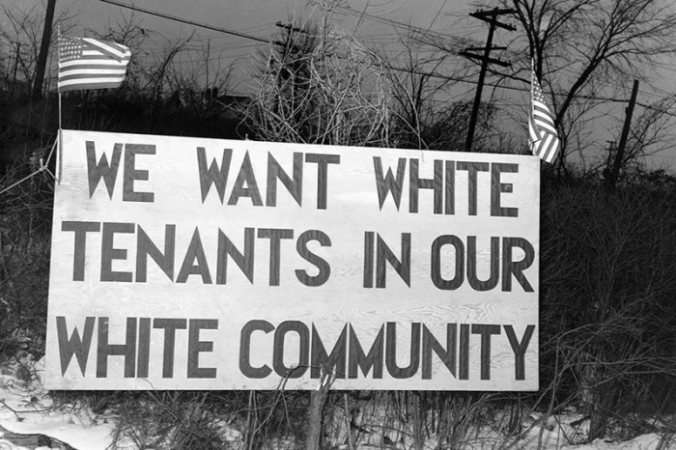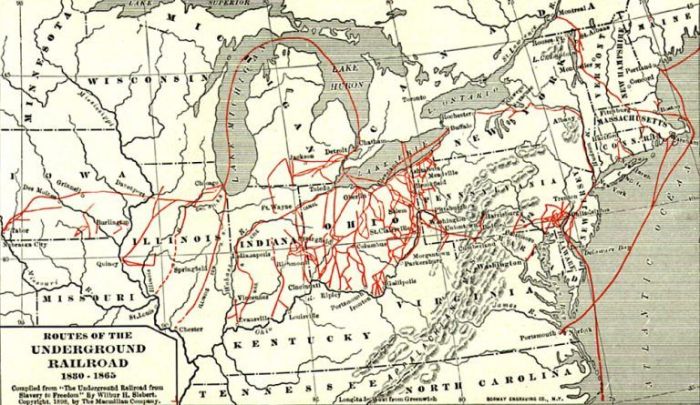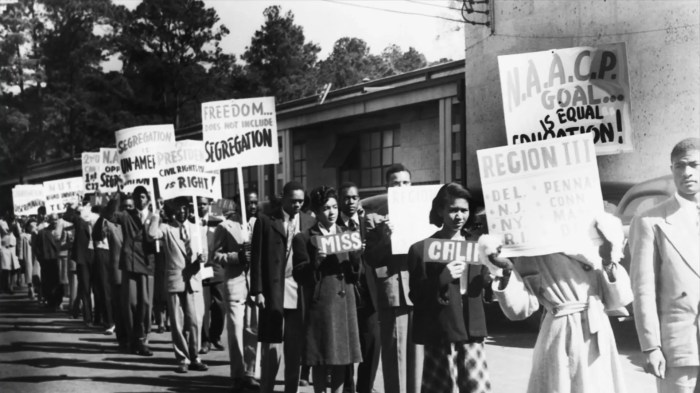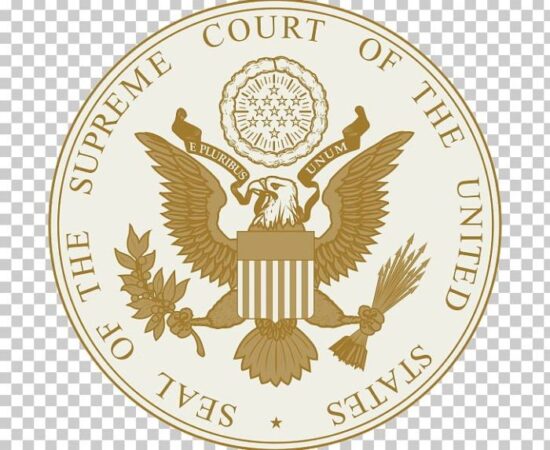
What was the Fugitive Slave Law of 1850? This controversial act, passed as part of the Compromise of 1850, aimed to appease Southern slaveholders by strengthening the legal framework for capturing and returning runaway slaves to their owners. The law fueled tensions between the North and South, further exacerbating the already existing divide over the issue of slavery.
The Fugitive Slave Act of 1850 was a significant turning point in the history of slavery in the United States. It dramatically increased the power of slave owners to reclaim their property, even in free states. This resulted in a surge of escaped slaves seeking refuge in the North, while also sparking widespread resistance and legal challenges.
Historical Context
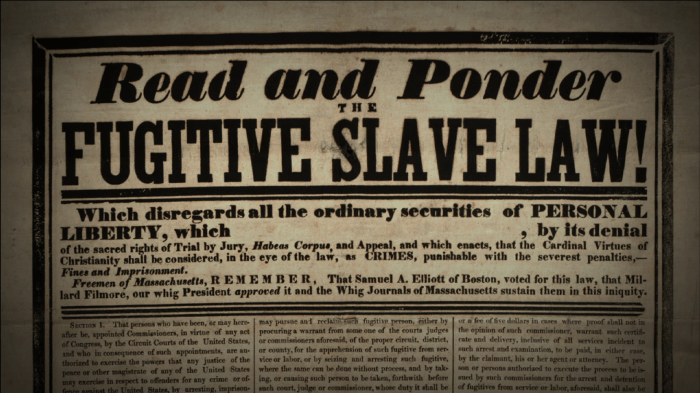
The Fugitive Slave Act of 1850 was a pivotal piece of legislation in the escalating conflict over slavery in the United States. It was enacted amidst a period of intense sectionalism and political tension, fueled by the expansion of slavery into new territories and the growing abolitionist movement.
The Role of Slavery in the United States Prior to 1850
The institution of slavery had been a defining feature of the American South since the colonial era. By the early 19th century, the economic and social fabric of the South was deeply intertwined with the labor of enslaved people. The cotton gin, invented in 1793, revolutionized cotton production, making it a highly profitable cash crop and increasing the demand for enslaved labor. The expansion of slavery into new territories, particularly in the West, became a major point of contention between the North and South.
The Compromise of 1850
The Compromise of 1850 was a series of five bills passed by Congress in an attempt to appease both the North and the South and prevent the nation from dissolving. The compromise aimed to resolve the issue of slavery in the territories acquired from Mexico after the Mexican-American War. It included the following key components:
- Admission of California as a free state: This addressed the growing imbalance in the Senate between free and slave states. California’s entry as a free state tipped the balance in favor of the North, angering Southerners who feared the loss of political power.
- The Fugitive Slave Act: This controversial provision strengthened the existing law, requiring all citizens, even in free states, to assist in capturing and returning runaway slaves. It also denied fugitive slaves the right to a jury trial and imposed harsh penalties on those who aided them.
- The Abolition of the Slave Trade in Washington D.C.: While slavery was not abolished in the District of Columbia, the slave trade was outlawed, a concession to the North.
- The Organization of Utah and New Mexico Territories: These territories were left open to slavery, allowing for popular sovereignty, or the right of residents to decide whether or not to allow slavery. This appeased the South, but it also laid the groundwork for future conflicts over slavery in the territories.
- The Settlement of the Texas Boundary Dispute: Texas relinquished its claims to land in New Mexico in exchange for federal financial compensation. This resolved a longstanding dispute between Texas and the United States government.
Provisions of the Fugitive Slave Act: What Was The Fugitive Slave Law Of 1850
The Fugitive Slave Act of 1850 was a controversial piece of legislation that aimed to strengthen the enforcement of the return of runaway slaves to their owners in the South. It represented a significant escalation in the national debate over slavery, further dividing the North and South.
The Act’s provisions significantly increased the power of slave owners and federal officials in capturing and returning runaway slaves. It imposed a number of responsibilities on citizens in both free and slave states, effectively turning the entire nation into a hunting ground for escaped slaves.
Responsibilities of Citizens Under the Act
The Act imposed a number of responsibilities on citizens in both free and slave states, making them active participants in the system of slave capture and return.
- Requirement to Assist in Apprehension: The Act mandated that all citizens, regardless of their personal views on slavery, were legally obligated to assist in the capture of fugitive slaves. This included providing information, aiding in the arrest, and preventing escape.
- Denial of Jury Trials: Fugitive slaves were denied the right to a jury trial, meaning they could be returned to slavery without a fair hearing or the opportunity to present their case. This effectively stripped them of any legal protections and placed their fate solely in the hands of slave owners and federal officials.
- Financial Incentives for Capture: The Act provided financial incentives for the capture and return of fugitive slaves. This created a system where individuals could profit from the exploitation of others, further fueling the economic and social forces that sustained slavery.
Impact on Free States and the North-South Divide, What was the fugitive slave law of 1850
The Act’s provisions had a profound impact on free states and exacerbated the already strained relationship between the North and South.
- Increased Tensions and Resistance: The Act sparked widespread outrage and resistance in the North. Abolitionists and anti-slavery groups condemned the law as unjust and immoral, organizing protests and actively working to undermine its enforcement. This resistance further fueled the tensions between the North and South, highlighting the growing divide over the issue of slavery.
- Erosion of Northern Principles: The Act forced free states to compromise their principles of personal liberty and due process of law. It placed the North in the position of actively participating in the enforcement of slavery, despite their growing opposition to the institution. This created a moral dilemma for many Northerners, forcing them to confront the reality of slavery and its implications for their own values.
- Rise of the Underground Railroad: The Act’s harsh provisions spurred the growth of the Underground Railroad, a network of abolitionists who provided safe passage to fugitive slaves seeking freedom in the North. The Underground Railroad became a symbol of resistance and a testament to the determination of individuals who risked their lives to fight against slavery.
Consequences of the Fugitive Slave Act
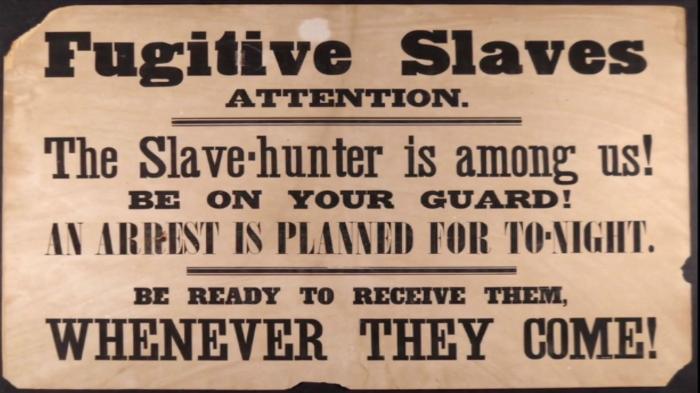
The Fugitive Slave Act of 1850 had profound consequences for individuals seeking freedom and for the nation as a whole. It intensified the already existing tensions between the North and South, leading to increased resistance and ultimately contributing to the outbreak of the Civil War.
Experiences of Individuals Attempting to Escape Slavery
The Fugitive Slave Act made it incredibly difficult for enslaved people to escape to freedom in the North. The Act placed the burden of proof on the alleged fugitive, and even if they were free, they could be returned to slavery based on the word of a slave catcher.
- Many enslaved people were captured and returned to slavery despite having escaped to free states.
- Some individuals were able to find refuge in the Underground Railroad, a network of abolitionists who provided safe houses and transportation for escaped slaves.
- The Fugitive Slave Act also led to increased vigilance in the North, as slave catchers were given the authority to pursue escaped slaves even in free states.
Legal Challenges and Court Cases
The Fugitive Slave Act was met with resistance from abolitionists and those who believed in the inherent right to freedom. This resistance took many forms, including legal challenges and court cases.
- The most famous case was the Prigg v. Pennsylvania case, which ruled that states could not pass laws that interfered with the federal Fugitive Slave Act.
- This decision made it much harder for individuals to challenge the Fugitive Slave Act in court.
- Despite the challenges, there were instances where individuals were successful in securing their freedom through legal means.
Impact on Tensions Between North and South
The Fugitive Slave Act intensified the already existing tensions between the North and South. The Act was seen as a victory for the South and a symbol of the growing power of the slaveholding states.
- Northern abolitionists saw the Act as a moral outrage and a violation of human rights.
- The Act fueled the growing abolitionist movement, which became more vocal and active in its opposition to slavery.
- The Act also contributed to the rise of political parties, such as the Free Soil Party, which opposed the expansion of slavery into new territories.
Legacy of the Fugitive Slave Act
The Fugitive Slave Act of 1850, despite its short lifespan, left an enduring mark on American history. It fueled sectional tensions, deepened the chasm between North and South, and ultimately contributed to the outbreak of the Civil War. The Act’s legacy is multifaceted, impacting the institution of slavery, shaping American law, and leaving a lasting imprint on the nation’s social fabric.
Impact on the Institution of Slavery
The Fugitive Slave Act of 1850 bolstered the institution of slavery by making it significantly easier for slave owners to reclaim escaped slaves. This reinforced the power of slave owners and strengthened the economic and social fabric of the South, which relied heavily on slave labor. The Act effectively denied escaped slaves any hope of freedom in the North, creating a system where they were constantly vulnerable to capture and return. This fueled resentment and anger among abolitionists, who viewed the Act as a blatant violation of human rights and a mockery of justice.
Escalation of Sectional Tensions
The Fugitive Slave Act became a potent symbol of the growing divide between the North and the South. It sparked outrage and resistance in the North, where many citizens saw it as a moral abomination. The Act led to the formation of underground railroads, secret networks that helped slaves escape to freedom in the North. It also contributed to the rise of the Republican Party, a new political force dedicated to opposing the expansion of slavery. In the South, the Act was seen as a victory for states’ rights and a validation of their way of life. However, it also intensified fears of a Northern conspiracy to abolish slavery altogether, further fueling the flames of sectionalism.
Lasting Significance in American Law and Society
The Fugitive Slave Act remains a controversial piece of legislation in American history. It stands as a stark reminder of the brutal reality of slavery and the lengths to which the nation went to uphold it. The Act’s legacy is evident in the ongoing debates over racial equality, police brutality, and the ongoing struggle for justice for marginalized communities. It highlights the enduring power of laws to perpetuate injustice and the importance of challenging them. The Act’s legacy also underscores the need for constant vigilance against the resurgence of discriminatory policies and the importance of safeguarding the rights of all citizens.
Concluding Remarks
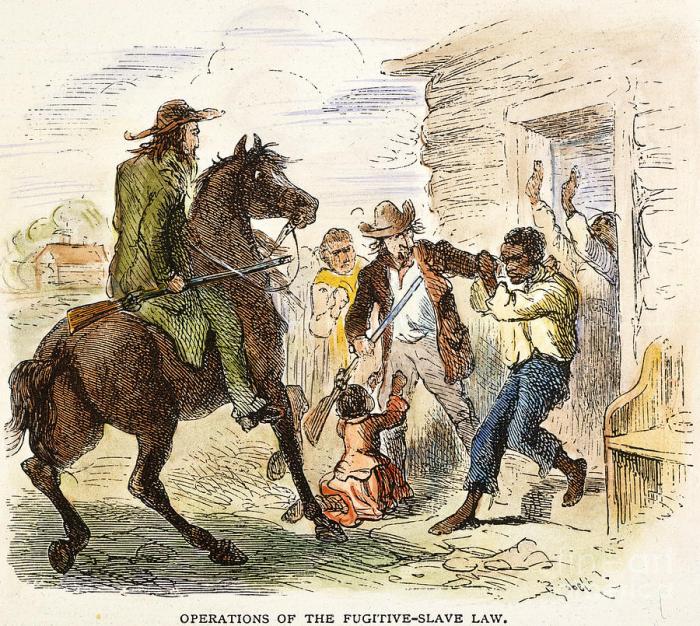
The Fugitive Slave Act of 1850 stands as a stark reminder of the complexities and injustices surrounding slavery in the United States. It ignited a firestorm of controversy, highlighting the deep divisions between the North and South and ultimately contributing to the outbreak of the Civil War. The act’s legacy continues to resonate today, reminding us of the importance of fighting for freedom and equality for all.
FAQ Explained
What were the key provisions of the Fugitive Slave Act of 1850?
The Act required all citizens, including those in free states, to assist in capturing and returning runaway slaves. It also denied accused fugitives a jury trial and limited their ability to challenge their capture.
How did the Fugitive Slave Act impact the Underground Railroad?
The Act intensified the efforts of the Underground Railroad, a network of abolitionists who helped slaves escape to freedom in the North. The increased risk and danger associated with helping runaway slaves only strengthened the resolve of those involved in the movement.
What were some of the legal challenges to the Fugitive Slave Act?
The Act faced numerous legal challenges, with many arguing that it violated the Constitution and the rights of free states. Some cases, like the Prigg v. Pennsylvania case, ultimately weakened the Act’s enforcement.

